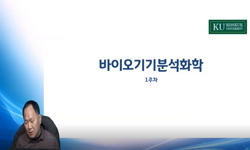물을 매개로 하는 병원성 미생물의 확산으로 발병하는 수인성 질병은 전 세계적으로 큰 문제가 되고 있다. 환경 중 병원성 미생물의 확산은 주로 산업, 가정, 농업 그리고 병원 폐수를 통해 ...
http://chineseinput.net/에서 pinyin(병음)방식으로 중국어를 변환할 수 있습니다.
변환된 중국어를 복사하여 사용하시면 됩니다.
- 中文 을 입력하시려면 zhongwen을 입력하시고 space를누르시면됩니다.
- 北京 을 입력하시려면 beijing을 입력하시고 space를 누르시면 됩니다.
환경부하 최소화를 위한 시설재배 배출수 처리 : 미생물 연료전지-막 생물 반응기 (MFC-MBR) 및 자외선 소독 (UV254-램프 또는 UV275-LED)의 순차적 공정 = Water treatment of effluents from cultivation facilities to minimize environmental loading : Sequential process of Microbial Fuel cell-Membrane bioreactor (MFC-MBR) and ultraviolet disinfection (UV254-lamp or UV275-LED)
한글로보기https://www.riss.kr/link?id=T16656250
- 저자
-
발행사항
전주 : 전북대학교 일반대학원, 2023
-
학위논문사항
학위논문(석사) -- 전북대학교 일반대학원 , 생명공학과 , 2023. 2
-
발행연도
2023
-
작성언어
한국어
- 주제어
-
발행국(도시)
전북특별자치도
-
형태사항
viii, 73 p. ; 26 cm
-
일반주기명
지도교수: 조민
-
UCI식별코드
I804:45011-000000055910
- 소장기관
-
0
상세조회 -
0
다운로드
부가정보
국문 초록 (Abstract)
물을 매개로 하는 병원성 미생물의 확산으로 발병하는 수인성 질병은 전 세계적으로 큰 문제가 되고 있다. 환경 중 병원성 미생물의 확산은 주로 산업, 가정, 농업 그리고 병원 폐수를 통해 이루어지고 있으며, 최근에는 식품 가공시설 세척수 및 시설재배 배출수가 새로운 확산 경로로 대두되고 있다. 하지만 우리나라는 이들에 대한 세부적인 처리 규제가 없어 적절한 처리 없이 환경으로 배출되어 문제가 되고 있다. 본 연구는 시설재배 배출수에 의한 병원성 미생물 확산을 억제하기 위해 폐수 처리 공법인 막 생물 반응기 (Membrane bioreactor; MBR), 미생물 연료전지 (Microbial fuel cell; MFC) 그리고 자외선 (Ultra violet; UV) 처리공법을 이용해 UV 소독을 결합한 lab-scale의 MFC-MBR 시스템을 구축했다. 구축한 시스템의 성능평가를 위해 시설재배 배출수를 재현한 합성폐수를 처리하여 미생물 확산 억제 가능성을 평가했다.
막 여과를 통한 미생물 제거를 위해 적용된 MBR은 약 2 log의 미생물 제거율을 보여주어 미생물 확산 억제 가능성을 보여주었고, 막 표면에 형성된 케이크 층에 미생물이 흡착됨으로써 제거되는 것으로 판단됐다. MBR 배출수 내 잔류 미생물 처리를 위해 UV 소독을 적용했고, UVC-LED (275 nm) 또는 저압 UVC 램프 (254 nm)를 사용하여 불활성화 효율을 비교했다. 두 조건 모두 효과적으로 배출수 내 미생물을 불활성화할 수 있음을 확인했다. 저압 UVC 램프는 UVC-LED보다 더 낮은 UV dose 값으로 더 큰 불활성화 효율을 달성했다. 그러나 UVC-LED의 UV dose 값을 높여줌으로써 차이를 극복할 수 있었다. 시스템 운전하는 동안, MFC를 통해 지속적인 전기 생산이 이뤄졌고, 높은 수준의 유기물 제거가 이뤄짐을 확인했다.
이러한 결과들은 본 연구에서 구축된 lab-scale의 처리 및 소독 시스템이 미생물 확산 억제뿐만 아니라 지속적인 에너지 회수 및 유기물 처리가 가능함을 시사한다.
다국어 초록 (Multilingual Abstract)
The spread of pathogenic microorganisms by water has been a problem due to the outbreak of waterborne diseases in the world. In the environment, pathogenic microorganisms have spread mainly through wastewater that comes from industrial facilities, hom...
The spread of pathogenic microorganisms by water has been a problem due to the outbreak of waterborne diseases in the world. In the environment, pathogenic microorganisms have spread mainly through wastewater that comes from industrial facilities, homes, agriculture, and hospital. Recently, effluent of food processing facilities and cultivation facilities has been considered a new spread pathway. However, Korea has no regulations to treat them, so they are being discharged to the environment without proper treatment. In this study, wastewater treatment process such as activated sludge process, membrane bioreactor (MBR), microbial fuel cell (MFC), and ultraviolet (UV) disinfection process were used to curb of pathogenic microorganisms caused by cultivation facility effluent. The performance of system was evaluated by using synthetic wastewater that reproduced cultivation facility effluent.
The MBR applied to remove microorganisms through membrane filtration showed a removal rate of about 2 logs. Removal by membrane filtration seems to occur by adsorption of a layer of cake formed on the membrane surface. Therefore, it can be seen that MBR can achieve suppression of microbial spread through membrane filtration. A low-pressure UVC lamp (254 nm) or UVC-LED (275 nm) was applied for UV disinfection of MBR effluent. Both light sources could effectively inactivate microorganisms in the effluent. Low-pressure UVC lamp conditions achieved higher inactivation efficiency than UVC-LED. However, UVC-LED conditions could overcome the inactivation efficiency gap by increasing the UV dose. Through system operation, sustainable energy recovery by MFC and high levels of organic matter removal was confirmed.
These results imply that the lab-scale treatment and disinfection system constructed in this study not only suppresses the spread of microorganisms but also enables continuous energy recovery and organic matter removal.
목차 (Table of Contents)
- Ⅰ. 서론 1
- 1. 연구 배경 1
- 2. 연구 필요성 및 목적 6
- Ⅱ. 실험 재료 및 방법 14
- 1. 재료 및 시약 14
- Ⅰ. 서론 1
- 1. 연구 배경 1
- 2. 연구 필요성 및 목적 6
- Ⅱ. 실험 재료 및 방법 14
- 1. 재료 및 시약 14
- 2. 미생물 배양 및 분석 15
- 3. 미생물 연료전지 (Microbial fuel cell; MFC) 19
- 1) 실험 재료 19
- 2) 반응기 구성 및 운전 22
- 3) 방전 테스트 25
- 4. 막 생물 반응기 (Membrane bioreactor; MBR) 27
- 1) 실험 재료 27
- 2) 반응기 구성 및 운전 30
- 3) 시스템 성능평가 32
- 5. MFC-MBR 시스템 35
- 1) 시스템 구성 및 운전 35
- 2) 화학적 산소요구량 (Chemical oxygen demand; COD) 분석 37
- 6. 자외선 (Ultraviolet; UV) 소독 38
- 1) 실험 재료 38
- 2) UVC 램프 실험 설계 및 분석 39
- 3) UVC-LED (light emitting diode) 실험 설계 및 분석 40
- 4) UV 불활성화 모델 43
- Ⅲ. 결과 및 고찰 44
- 1. 시스템 운영 44
- 1) MFC 방전 테스트 44
- 2) COD 제거율 46
- 3) 에너지 회수효율 46
- 4) MBR 성능평가 49
- ① Flux 측정 및 비교 49
- ② 막 여과에 의한 미생물 제거효율 53
- 2. UV 소독 57
- 1) S. typhimurium 불활성화 평가 57
- 2) MS-2 phage 불활성화 평가 57
- Ⅳ. 결론 65
- 인용 문헌 67
- 요약 72












